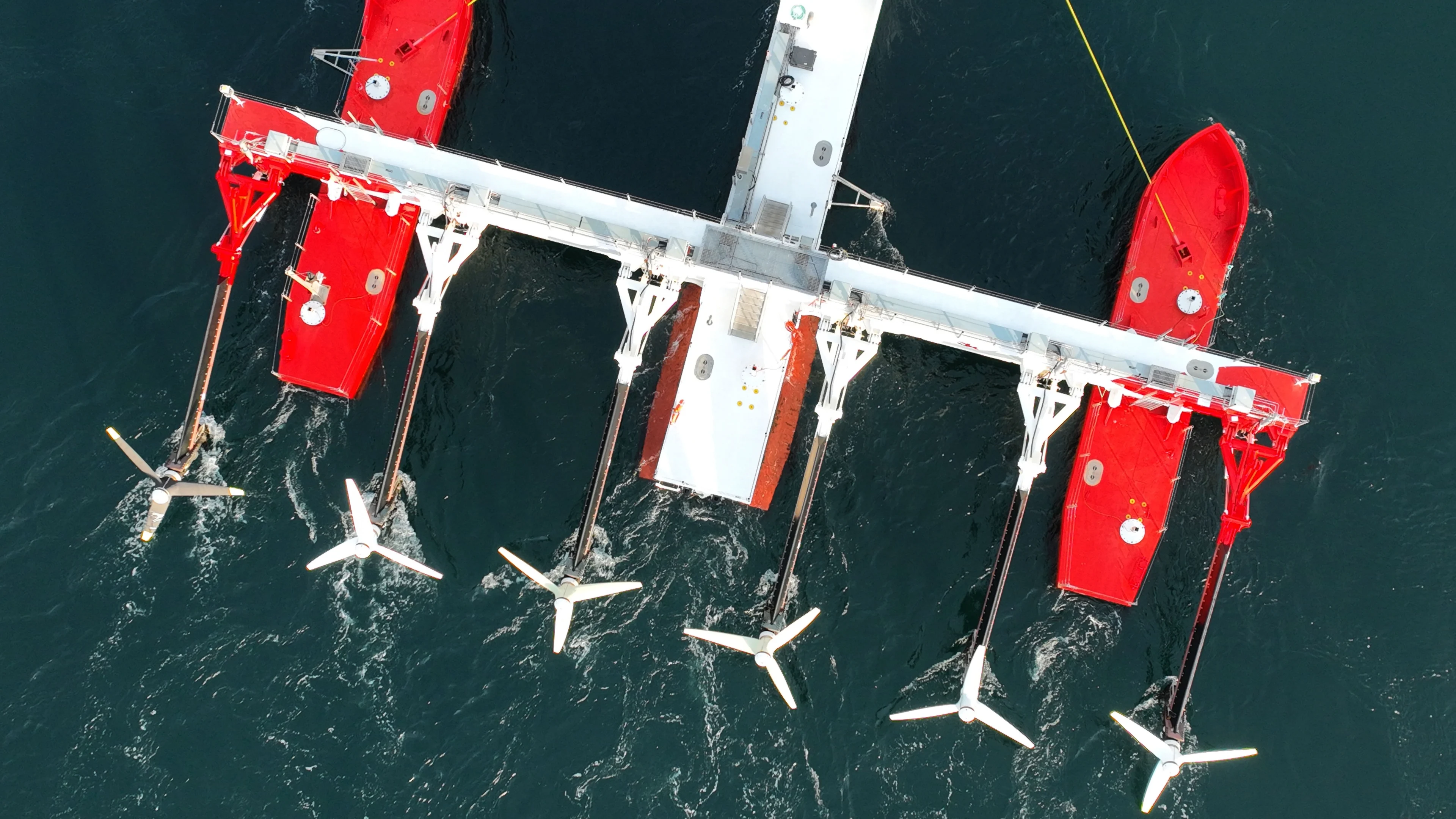
Another tidal energy project fails in Nova Scotia
After Sustainable Marine Energy announced that it was scrapping its project, questions remain about how tidal energy can move forward in the province.
The Minas Passage has been called the Everest of tidal power, and for good reason.
Fourteen billion tons of water flow through the narrow section of the Bay of Fundy off the coast of Nova Scotia during every tidal cycle, moving at speeds of up to five metres per second. The extractable energy potential is estimated to be about 2500 megawatts, equal to removing greenhouse gas emissions for about a million cars.
It’s an obvious draw for tidal energy companies. But, so far, none have been able to successfully set up shop and provide sustained energy to the province.
So why do they come here and fail?
The most recent casualty is Sustainable Marine Energy, who brought a floating tidal power project promising easy accessibility for repairs and minimal environmental impact. After their setup produced power for Nova Scotia's power grid in Grand Passage for almost a year, they were unable to progress forward, shutting down operations in early May and blaming the Department of Fisheries and Oceans.

Sustainable Marine Energy's floating tidal power project. (Sustainable Marine Energy)
This follows the demise of Cape Sharp Tidal, who abandoned their massive turbine on the ocean floor in 2018 after one of the parent companies went bankrupt. The turbine still sits at the bottom of the basin.
In the case of Sustainable Marine Energy, there remains a dispute about application timelines and possibility for future testing around impacts on wildlife.
Lindsay Bennett, executive director of the Fundy Ocean Research Centre for Energy (FORCE), said in a written statement to The Weather Network that the problem stems back to "the inability of Fisheries and Oceans Canada (DFO) to provide the required permits to progress their projects in the Bay of Fundy, specifically the proposed deployment at the FORCE test site at Minas Passage."
In the DFO’s statement to The Weather Network, they maintain that "an adequate monitoring plan is needed to evaluate impacts to fish and fish habitat in the higher flow environment in which the project is proposed. To date, adequate information has not been received from the proponent."
Despite a roughly $29-million investment from the government, Sustainable Marine Energy is now bankrupt, while FORCE has a test site that will now continue to remain idle.
"It really is disappointing and, you know, a blow for tidal energy. We were excited to host their technology at our site as we are all of the technologies that are intended to be tested at the force site. We were created to understand if tidal energy technology can be safe for the environment, if it can coexist with other users, and viable so that it can contribute to Canada's clean energy mix," said Bennett.
Bennett added Canada really needs to build a clear regulatory path for marine renewable energy in order to allow predictability and clarity to attract and maintain investment.
The Canadian Press recently reported that the government will be creating a task force for future tidal power regulation.
Thumbnail image: Sustainable Marine Energy's floating tidal power project. (Sustainable Marine Energy)











